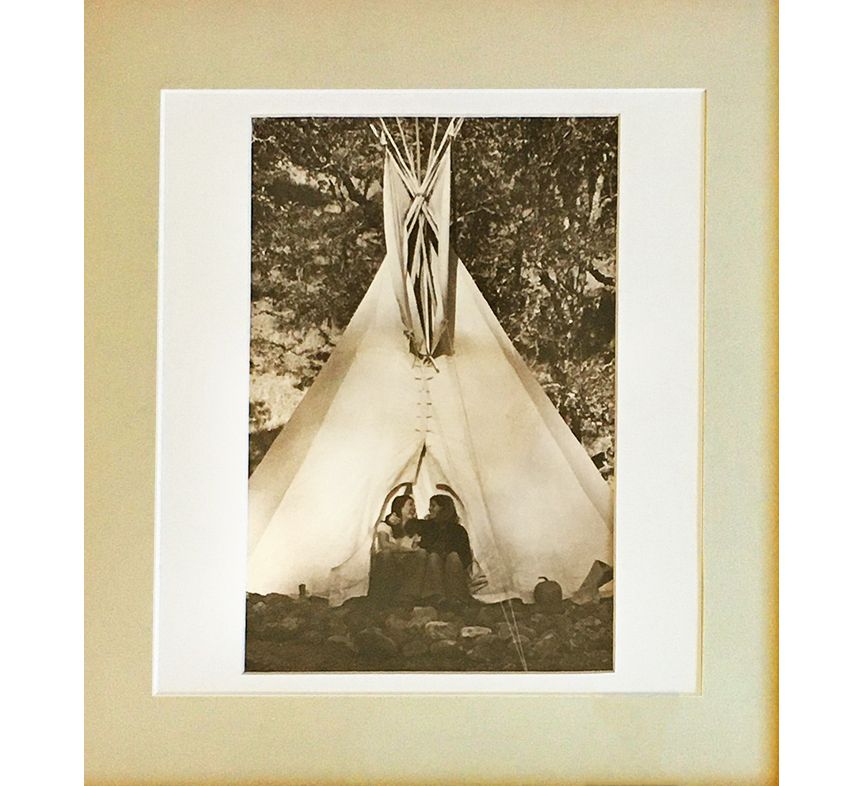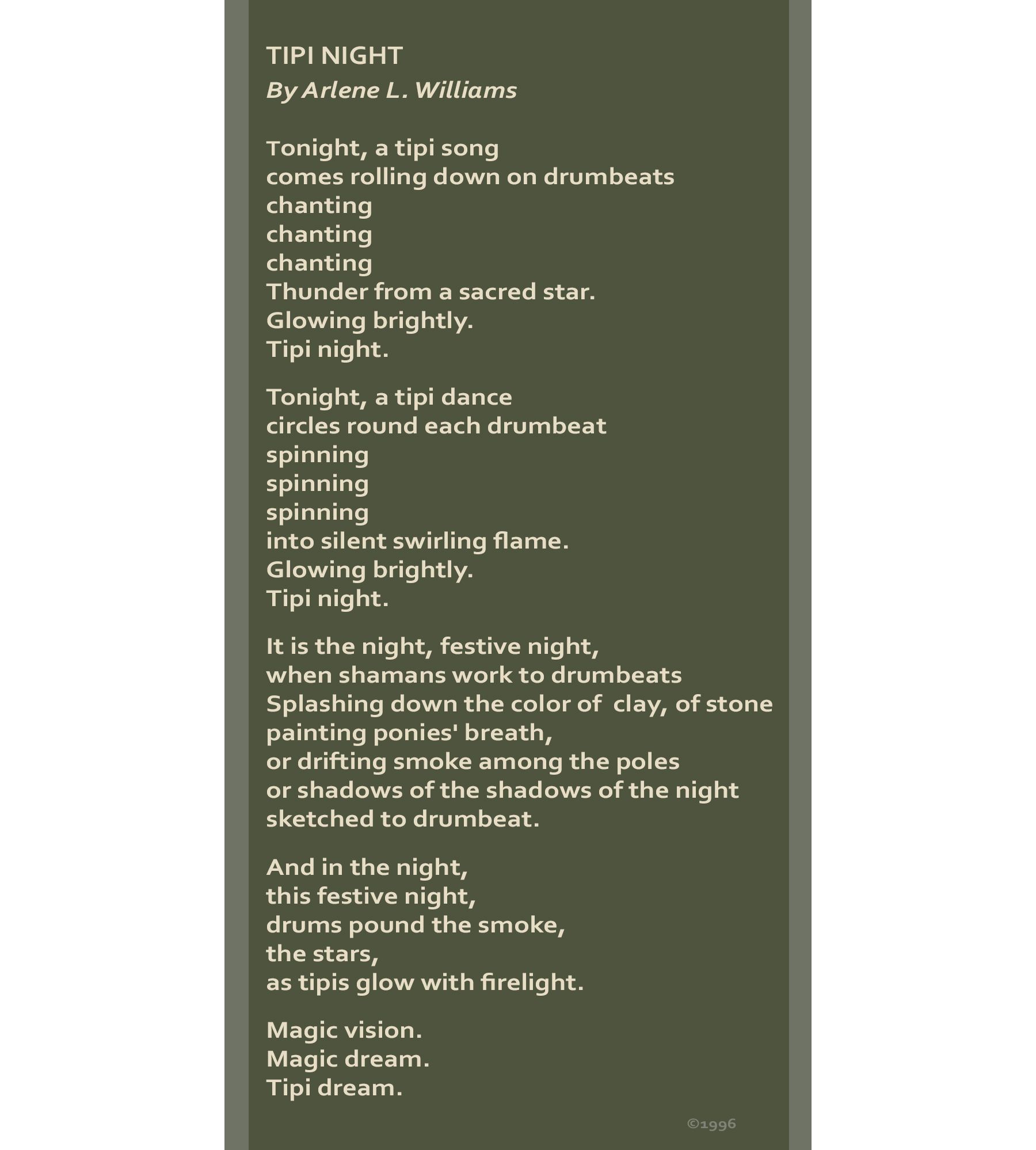Tipi Stories

I am in the process of downsizing, moving into a condominium half the size of where I’ve been living. I look forward to having a smaller imprint, yet at times it is impossible to choose what to let go of and what to bring. As a rule, people crave space—a large home and the feeling of freedom it brings, but space also brings a curse. That curse is the over accumulation of stuff, and I’ve been feeling the effects of it. It’s been a hard truth to face, but the non-materialistic, make-do, hate-to-buy-anything-new me, still has too much stuff.
So, what does this have to do with writing climate fiction? Well, it has to do with stories. The hardest items for me to part with are the ones that are embedded with story. And for me there is no story more powerful for me than my tipi.
I made it myself in the late 70s. I still have the draw knife I used to debark the lodge poles, smoothing them down so raindrops would slide down their length and not drip off a rough spot onto my head. I sewed the canvas on a friend’s industrial sewing machine, piercing my finger late one night, ending up in emergency to remove the needle point that broke off in it. I built a plywood floor, added a wood stove, creating a snug, warm home through the winter. When the creek ran full, I crossed it on the wide, low limb of an old Pepperwood tree, and on full moon nights, I strolled through my little valley washed in silver light as coyotes yipped from the hilltops. Stories… my tipi is full of them.

Now, my tipi is folded up into a storage tub, where it’s been for a long time. I no longer have the poles, and living in the city, I have no hope of raising my tipi again. But I can’t get rid of it. It’s the tug of those stories—a power that flows through my brain into the deepest spaces, triggering strong emotions, soothing me, refreshing me.
My husband, my children, think I’m crazy to keep hold of something so useless. They don’t have tipi stories. They are attached to other stories that don’t move me… like soccer. They all played soccer growing up. Their soccer stories are compelling to them, but not to me. And this is the point I am trying to make. We all connect to different stories because of our life experience, and yet, if I took the time to write a wonderful story about a woman alone in the hills in her tipi, a story full of stunning imagery, an exciting plot, and a riveting climax, I might be able to make my family understand the power that tipi holds for me.
If we want others to care about our earth, our climate, our future as much as we do, we need to help those working to write the stories that will reach into the emotional parts of a reader’s brain, building visions of lifestyles more sustainable than the ones we live, connecting them to nature and future generations until fixing our climate becomes their priority.
This is what stories can do. This is the work that can make a difference.

Member discussion